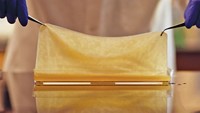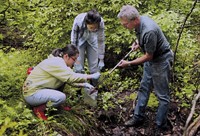Advertisement
Grab your lab coat. Let's get started
Welcome!
Welcome!
Create an account below to get 6 C&EN articles per month, receive newsletters and more - all free.
It seems this is your first time logging in online. Please enter the following information to continue.
As an ACS member you automatically get access to this site. All we need is few more details to create your reading experience.
Not you? Sign in with a different account.
Not you? Sign in with a different account.
ERROR 1
ERROR 1
ERROR 2
ERROR 2
ERROR 2
ERROR 2
ERROR 2
Password and Confirm password must match.
If you have an ACS member number, please enter it here so we can link this account to your membership. (optional)
ERROR 2
ACS values your privacy. By submitting your information, you are gaining access to C&EN and subscribing to our weekly newsletter. We use the information you provide to make your reading experience better, and we will never sell your data to third party members.
Start-ups
Allonia launches to destroy pollution with microbes
Gingko spin-off says modified organisms can break down tough PFAS
by Melody M. Bomgardner
October 29, 2020
| A version of this story appeared in
Volume 98, Issue 42

Allonnia, a spin-off of the synthetic biology firm Ginkgo Bioworks, has launched with $40 million in investor backing to develop microbes capable of breaking tough chemical bonds to battle pollution and treat waste. This is Ginkgo’s third spin-off, after agriculture microbe firm Joyn Bio and ingredient-focused Motif FoodWorks.
Microbes are already used in wastewater treatment to break down organic pollutants. But some organisms can degrade man-made chemicals, including stubborn pollutants like per- and polyfluoralkyl substances (PFAS), says Dayal Saran, Allonnia’s head of R&D.
CEO Nicole Richards says the start-up also plans to develop microbes that bind metals and other valuable materials in waste streams.
Richards, who previously led growth and strategy for DuPont’s water solutions business, acknowledges that PFAS are the toughest challenge on the to-do list. Water treatment facilities can use activated carbon, ion-exchange resins, or reverse osmosis to trap PFAS, but they do not destroy the chemicals. “We think synthetic biology is a more relevant and potentially more complete solution,” Richards says.
PFAS owe their persistence to strong carbon-fluorine bonds. Organisms that can break those bonds are most likely rare, says Peter Jaffé, a professor of civil and environmental engineering at Princeton University. He discovered the ability in a strain of iron-reducing anaerobic bacteria, but the breakdown was slow and incomplete. Scientists are just beginning to characterize the responsible enzymes, Jaffé says.
Another organism that breaks C–F bonds is an aerobic fungi that evolved to digest tough plant lignin, Saran says, and Allonnia’s goal is to turn up the activity. “What we want to do is what takes nature thousands of years.”





Join the conversation
Contact the reporter
Submit a Letter to the Editor for publication
Engage with us on Twitter